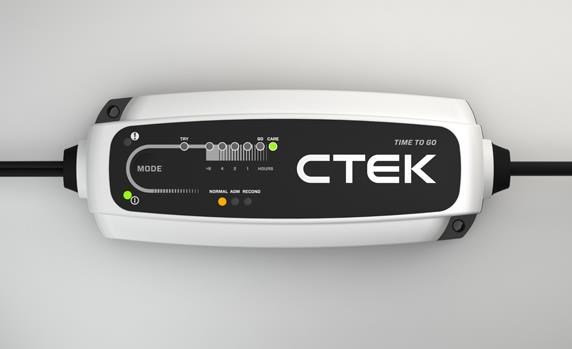Buying Your First Hybrid Car: A Comprehensive Guide
Table of Contents:
- Introduction
- Why Choose a Hybrid?
- Understanding Hybrid Technology
- Cost Benefits of Hybrids
- Environmental Impact
- Maintenance and Longevity
- Tips for Buying Your First Hybrid
- Final Thoughts
Introduction
As the push for more eco-friendly and fuel-efficient vehicles continues, hybrid cars are becoming an increasingly popular choice for many consumers. When exploring options for your next vehicle purchase, online platforms make it easy to browse various selections, such as Toyota new car inventory, helping you find the perfect model that fits your needs. With the rise in environmental consciousness and the need to cut fuel costs, hybrids offer a compelling blend of both.
This guide will walk you through everything you need to know about buying your first hybrid car, from the reasons to choose a hybrid to tips for making the best purchase. By the end of this article, you’ll be well-equipped to make an informed decision that suits your lifestyle and budget.
Why Choose a Hybrid?
Hybrid cars combine the benefits of gasoline engines with electric motors, offering outstanding fuel efficiency and reduced emissions. They are trendy among city dwellers who face stop-and-go traffic daily. Not only do hybrids use significantly less fuel in such conditions, but they also reduce the idling emissions that contribute to air pollution.
Moreover, many governments offer incentives for purchasing hybrid vehicles, making them even more appealing. The savings on fuel and potential tax breaks or rebates can make a hybrid more affordable in the long run compared to traditional gasoline cars. Choosing a hybrid means reaping the financial rewards and contributing positively to the environment, creating a win-win scenario for both the owner and the planet.
Understanding Hybrid Technology
Hybrid cars come equipped with an internal combustion engine and an electric motor. These vehicles can switch between or combine power sources to optimize fuel efficiency. The most common types are:
- Series Hybrids: In a series hybrid, the electric motor is the only power source that drives the wheels, while the gasoline engine acts as a generator to recharge the battery. This type is particularly efficient in city driving, where frequent stops and starts are common.
- Parallel Hybrids: In parallel hybrids, the gasoline engine and the electric motor can drive the wheels simultaneously or independently. This allows for a versatile driving experience, benefiting from the efficiency of the electric motor and the gasoline engine’s power when needed.
- Plug-in Hybrids are similar to parallel hybrids but with a larger battery that can be charged via an external power source. This allows for longer electric-only driving ranges, which is ideal for those with short commutes who can regularly charge their vehicle at home or work.
Understanding these different types of hybrids is crucial in making an informed decision. For those in search of the latest vehicle models, exploring options like Sarasota new car dealerships can provide a wide selection of cars along with expert guidance on the best choices available.
Cost Benefits of Hybrids
While hybrid cars often come with a higher upfront cost, the long-term savings on fuel and potential tax incentives can make them a wise investment. According to studies, many hybrids pay for themselves within a few years through fuel savings alone. Additionally, some countries and states offer significant tax credits or rebates for purchasing hybrids, enhancing their cost benefits.
When calculating the long-term financial impact of owning a hybrid, factor in not just fuel savings but also lower maintenance costs, as hybrids often have fewer mechanical issues than traditional cars; moreover, the resale value of hybrid vehicles is generally higher, providing better returns if you decide to sell your car. Overall, the cost benefits of hybrids extend beyond fuel savings, providing a comprehensive financial advantage.
Environmental Impact
Hybrid cars produce fewer emissions than traditional gasoline-powered cars, making them a more environmentally friendly choice. Their ability to run on electric power alone during low-speed driving significantly reduces carbon dioxide emissions and other pollutants. This can contribute to cleaner air and a reduced carbon footprint.
Driving a hybrid can be part of the solution for those living in cities with high air pollution. Reducing harmful emissions is vital for environmental sustainability and public health, offering a meaningful way to contribute to the fight against climate change. Adopting hybrid technology is a step toward a greener future, benefiting current and future generations.
Maintenance and Longevity
Hybrid cars generally require less maintenance than traditional vehicles because the electric motor takes some of the load off the engine. This means fewer oil changes and less wear and tear on the engine, translating to lower maintenance costs over the vehicle’s lifespan. However, to maximize your car’s lifespan, it’s essential to understand the specifics of hybrid maintenance, such as battery care and system checks.
The battery in a hybrid vehicle is designed to last for a significant portion of the car’s life, and many manufacturers offer warranties that can extend up to eight years or more. Additionally, regenerative braking systems reduce brake wear, adding to the longevity and reliability of hybrid vehicles. Regular maintenance and following the manufacturer’s guidelines ensure your hybrid performs optimally for many years.
Tips for Buying Your First Hybrid
- Do your research: Compare different models and types of hybrids to find the one that best suits your needs. Consider factors like fuel efficiency, electric-only range, and overall cost. Researching consumer reviews and expert opinions can provide valuable insights into the pros and cons of various models.
- Test drive: Take the car for a test drive to get a feel for its performance and comfort. Pay attention to things like acceleration, braking, and the seamlessness of transitioning between power sources. A test drive can help determine if the vehicle meets your driving preferences and comfort levels.
- Check incentives: Consider tax breaks and government incentives for purchasing hybrid vehicles. These can significantly reduce the initial cost and improve your return on investment. Staying informed about available incentives can result in substantial savings, making the transition to a hybrid more financially accessible.
- Consider resale value: Some hybrids hold their value better than others; research the resale value of the models you’re interested in. Hybrid technology is continually improving, which can affect the depreciation rates of different makes and models. Selecting a model with a substantial resale value ensures better financial returns if you decide to sell your car in the future.
Final Thoughts
Buying your first hybrid car is a significant step toward a more sustainable lifestyle. With advancements in technology and increased consumer awareness, hybrid vehicles offer a practical and eco-friendly option. Use this guide to navigate your purchase smoothly; you’ll be driving green in no time.





